Sidewalks haven’t always been commonplace, even though they’ve existed since the Classical Era. And until recently, curbs were even more rare.
We know that curbing along roads has existed since at least Pompeii, but it wasn’t until the late 1700s that sidewalks were deemed important enough to safety to warrant legislation that they became more commonplace. But even then, wood or stone bollards were often used to separate sidewalks from the road.
As laws began requiring the sidewalks to be raised in urban areas, curbs became a key feature. Nowadays, they serve multiple functions: they work in combination with gutters to improve drainage along roads, discourage drivers from mounting or parking on sidewalks and lawns, provide structural support for pavement, and add to the overall aesthetics. However, curbing isn’t just used along roads.
The following list of curbs and curbing illustrates just how varied this often overlooked feature can be.
See Also: 27 Types of Construction Vehicles
Types of Curbs and Curbing
1. Asphalt Curb
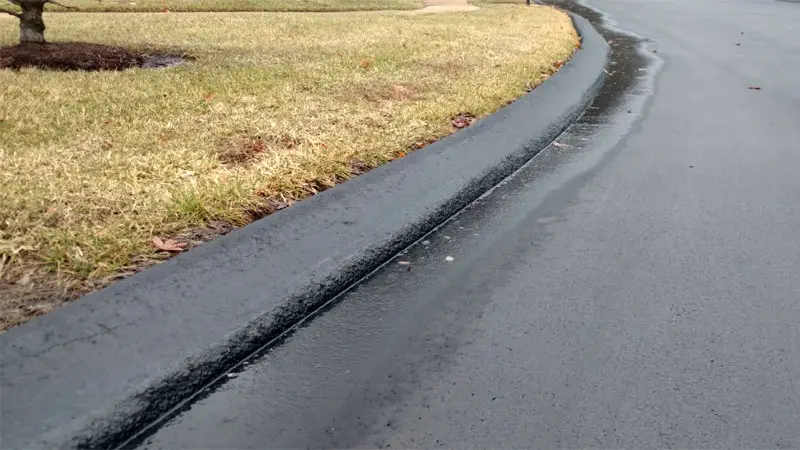
Asphalt is one of the most popular materials for paving roads, so it’s no surprise someone came up with the idea of using it for curbing as well. This material is a combination of aggregate, binder, and filler to produce a cheaper alternative to concrete.
While not as durable and requiring a special paving machine, asphalt curbing can be installed at the same time as the road. Depending on how it’s used and the surrounding landscape, it can really add some aesthetic appeal.
2. Barrier Curb
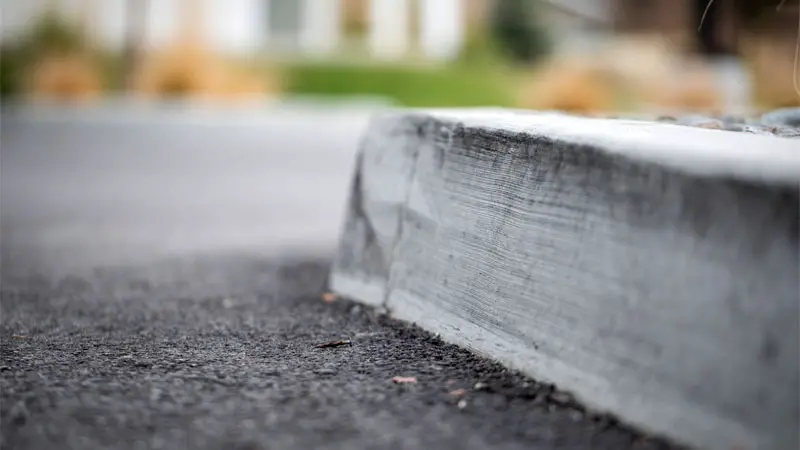
Also commonly referred to as a straight curb, these are a very basic form of raised curbing. You’ll often find these along roads, especially in urban and suburban areas. Their straight sides make it more difficult to mount the curb and also help prevent flooding during heavy rains.
These curbs were originally made of cut stone or masonry, causing them to have a squared off shape with 90-degree corners. However, they’re now most frequently made of concrete and have more flexibility in their overall shape.
For example, the corners are sometimes cut at a 45-degree angle or rounded. This can make them a little less dangerous if someone falls onto them and can also make them more aesthetically pleasing.
3. Curb Cuts
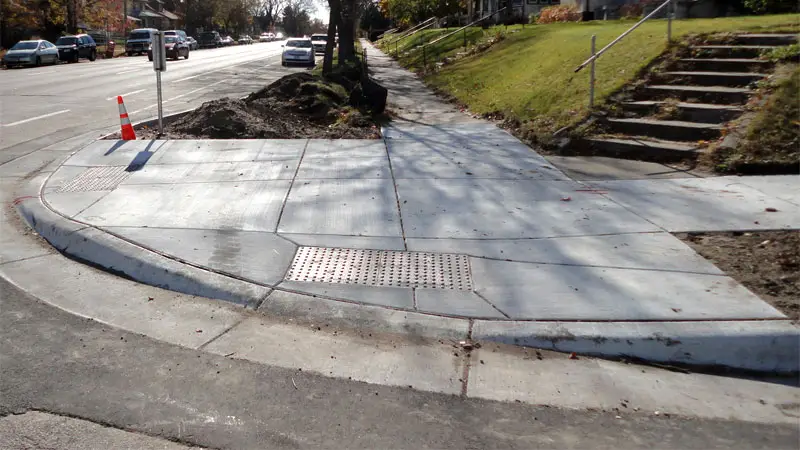
While technically a curb feature, curb cuts deserve their own mention, as these serve important tasks and can look quite different from the rest of the curb.
There are two main functions for curb cuts. The first is to provide access between the road and sidewalk for bicycles, skateboards, roller skates, and wheelchairs. These tend to be found along street corners or crosswalks and sometimes feature bright paint or a textured surface to make them easier to see (or feel, in the case of the blind).
The second purpose is to provide a transition between driveways and the road. In this case, the curb might be sloped or even flush with the road. In the latter case, the curb often feels more aesthetic than functional, continuing the visual line of the curbing but dipping down to accommodate the driveway.
4. Granite Curb
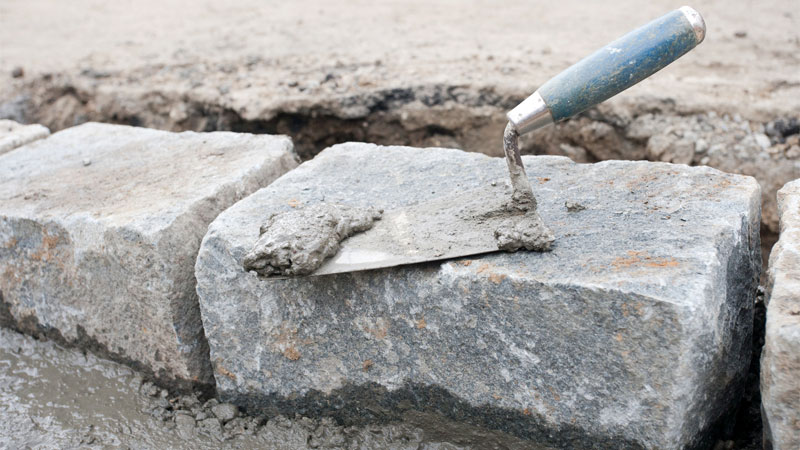
If there’s one material that needs more attention, it’s granite. Concrete became as popular as it is because it’s seemingly cheaper than most other materials and is quite durable. However, maintaining a concrete curb can become quite expensive in the long run. Granite, meanwhile, is a natural stone that can last for hundreds of years when properly cut.
Granite curbs add a degree of simple elegance, making them popular around municipal buildings and along state highways. In cities prone to extreme weather, a granite curb will easily outlast concrete, which usually needs replaced every 20 years.
5. Landscape Curb
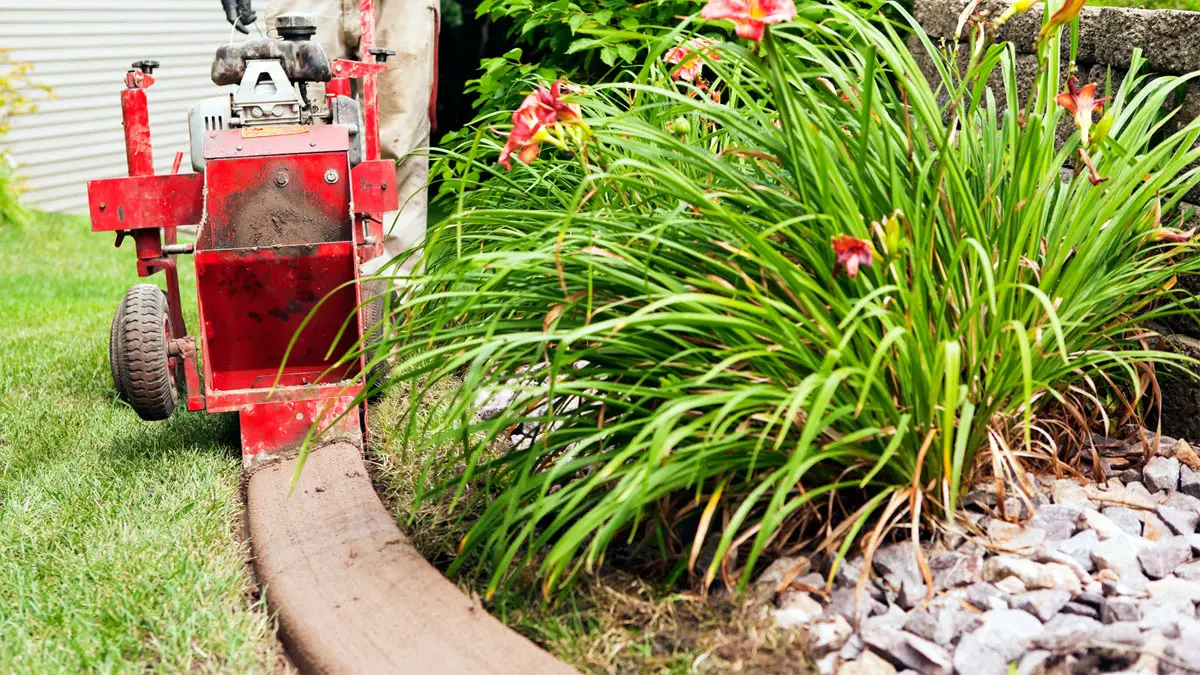
When you think of a curb, chances are you immediately picture the side of a road. However, landscape curbing (also called a mower curb) is different. These are cousins of barrier curbs designed to separate parts of a garden, grass, various types of gravel, or other landscaping features, rather than separating roads and walkways.
Unlike barrier curbs, a landscape curb sometimes has a section in front that is flush with the lower ground as well as a barrier section leading up to the higher ground. A curb extruder machine is fitted with various molds to create different styles of landscape curbing.
The benefit of this additional section, which resembles gutter edging on some roadside curbs, is to create a zone where grass is unable to grow and where plants don’t encroach into a lawn. This makes it easier to use a lawnmower along the edge without the blades being damaged or having to return with an edge trimmer.
As such, you’ll find this type of curbing in municipal parks, fancy gardens, and in the yards of many residential homes.
6. Masonry Curb
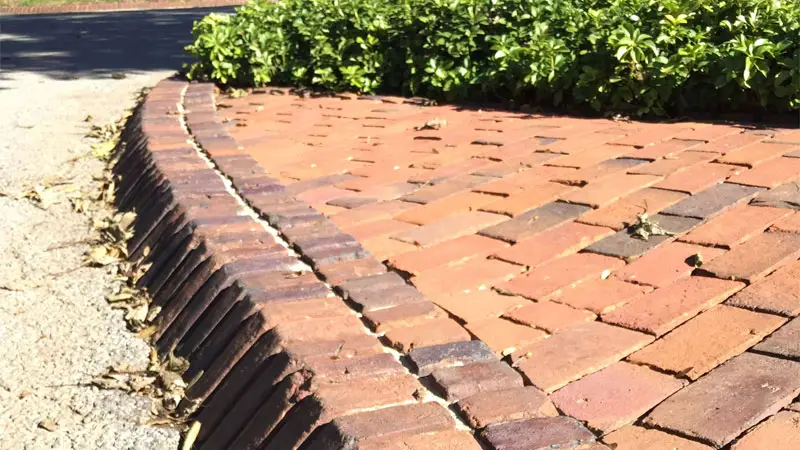
You don’t see these as often, but masonry has been a popular option since at least Roman times. Roman brick, cut stone, and other forms of masonry are beautiful, relatively inexpensive, and functional. In some cases, the masonry is placed on top of a concrete slip, with additional concrete being used in place of mortar.
Despite not being as common in the US, many European countries use masonry curbs extensively to maintain the rustic appeal of many tourist traps.
7. Monolithic Integral Curb
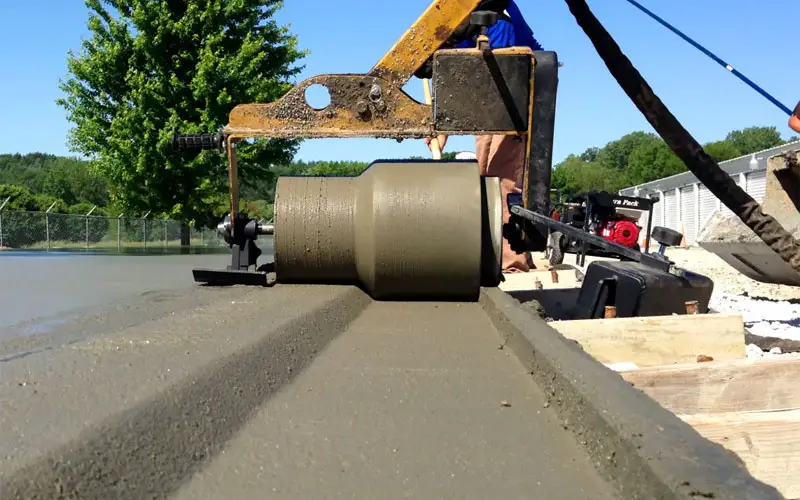
Despite the epic name of this curb type, they’re actually quite simplistic in design and are quite commonly made of asphalt or concrete. In fact, they’re not only made of the same materials as the road or sidewalk, they’re actually fully integrated into them. And this is where their true advantage lies.
Unlike curbs that are added separately, a monolithic curb has no joints, allowing them to last far longer under the elements. They create a much smoother transition and are less likely to be damaged by heavy vehicles. On top of that, they just plain look great, which is why you’ll often find them being used in upscale neighborhoods.
8. Perforated Curb
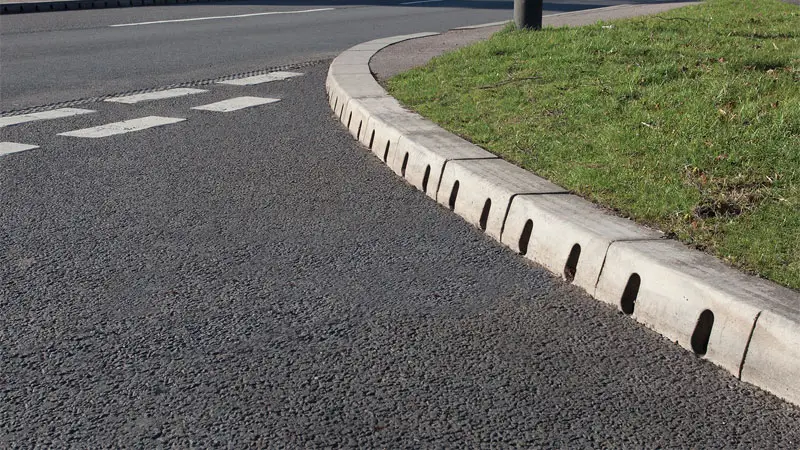
Drainage has always been a problem, especially in areas with high rainfall and flooding. One way of combatting this issue is the use of perforated curbing. These are sections of barrier curb in which a horizontal slot has been cut into the bottom of the curb.
The slot allows water access into the sewer system without the need for grating. Previously, this same function was performed by the combination of metal grates in the street and a gap in the curb which was often topped by a concrete or metal cover.
However, this older method of drainage was problematic, with toys, keys, and other valuables often falling into them (which quickly became a popular trope in comedies). In some cases, small animals would also become trapped.
Perforated curbs create a much smaller opening, making it harder for such mishaps while also being more aesthetically pleasing.
9. Portland Concrete Curb
By far the most popular material used in curbing throughout much of the world, concrete is relatively cheap, easy to work with, and easily repaired. Installation may be done using a slip form casting machine, metal forms, or even using precast sections.
One of the advantages of using Portland concrete is the stark contrast between road and curb, which increases visibility while also blending in with nearby concrete sidewalks.
As odd as it sounds, proposals are being made to replacing the aggregate materials in concrete curbs. One of the many proposed materials is recycled tires, which would give the curbs a little more flexibility while retaining most of their durability.
It would also make the curbing material a little more like asphalt while retaining most of the qualities of concrete.
See Also: 15 Types of Cement
10. Rolled Curb
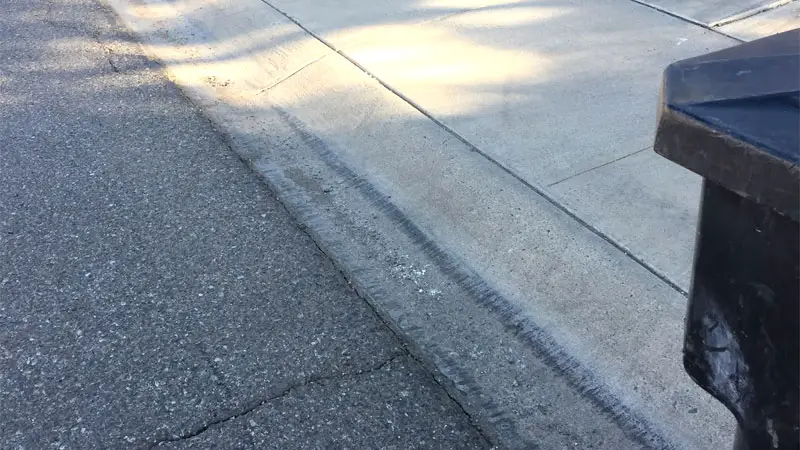
This is an offshoot of the barrier curb that foregoes vertical walls for a fully curved surface. They still perform many of the barrier curb’s functions but can be used to mount driveways that are above street level.
By using rolled curbs, it’s possible to eliminate the need for curb cuts while also maintaining a more uniform look to the entire curb.
However, while they look good, their benefits can also be drawbacks. For example, they make it easier for a vehicle to mount sidewalks or lawns. They can also cause damage to your vehicle because they still create a drop. This latter problem is usually solved by adding a curb ramp to the end of the driveway.
11. Sandstone Curb
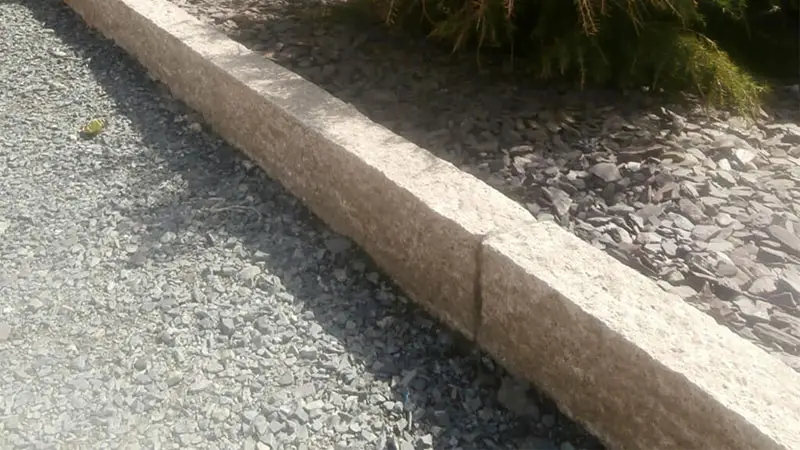
Throughout the first half of the 1900s, sandstone was the go-to material for curbs. This easily mined, attractive material was cheap and durable. Despite the name and appearance, it’s actually made of primarily quartz and feldspar, two extremely common minerals.
With the rise of concrete as an alternative, sandstone curbing has become increasingly rare and pieces that have been removed are becoming increasingly popular materials for rustic garden steps and other projects.
12. Slanted Curb
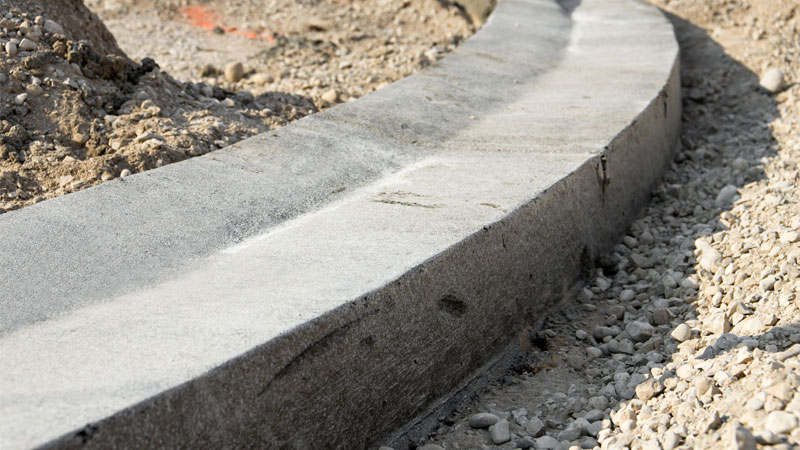
While some barrier curbs are cut at an angle, they still create a barrier, as do rolled curbs. However, thes slanted curb is quite different.
These purely decorative curbs merely provide a transition from a slightly higher surface to a slightly lower one without creating more than an aesthetic border between the two.
A perfect example of a slanted curb is the transition between a driveway and the lawn beside it. The edges of the driveway are often smoothed at an angle to provide a sense of transition, rather than a sharp division.
